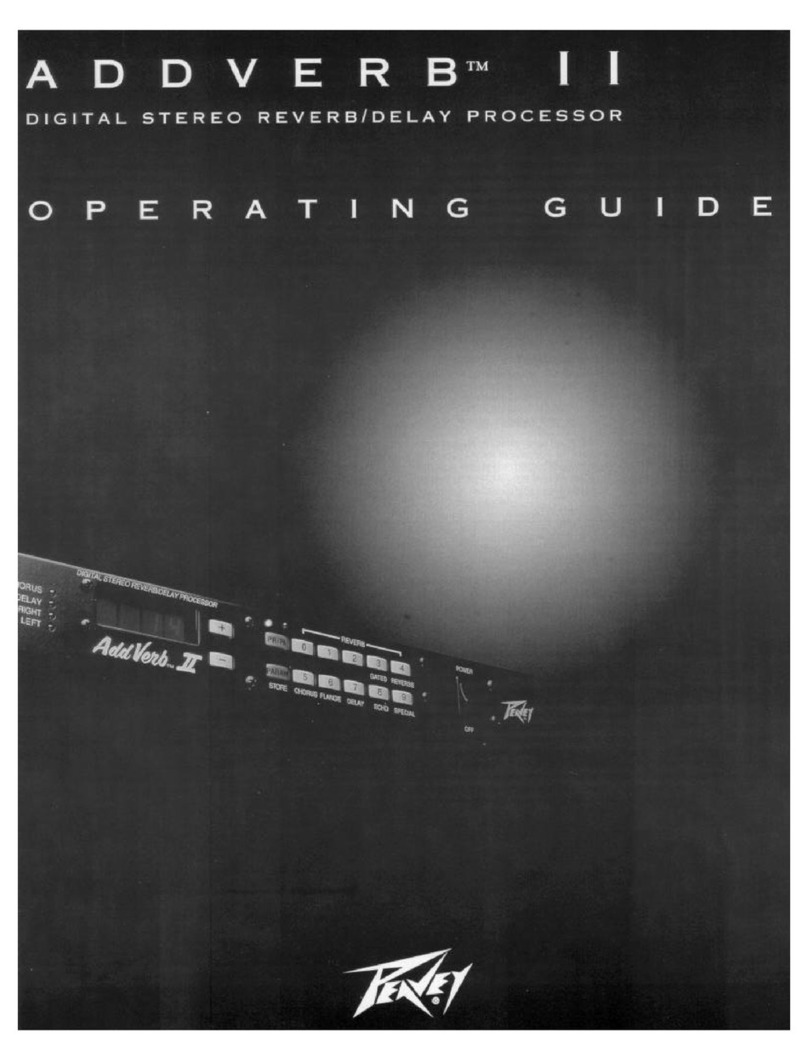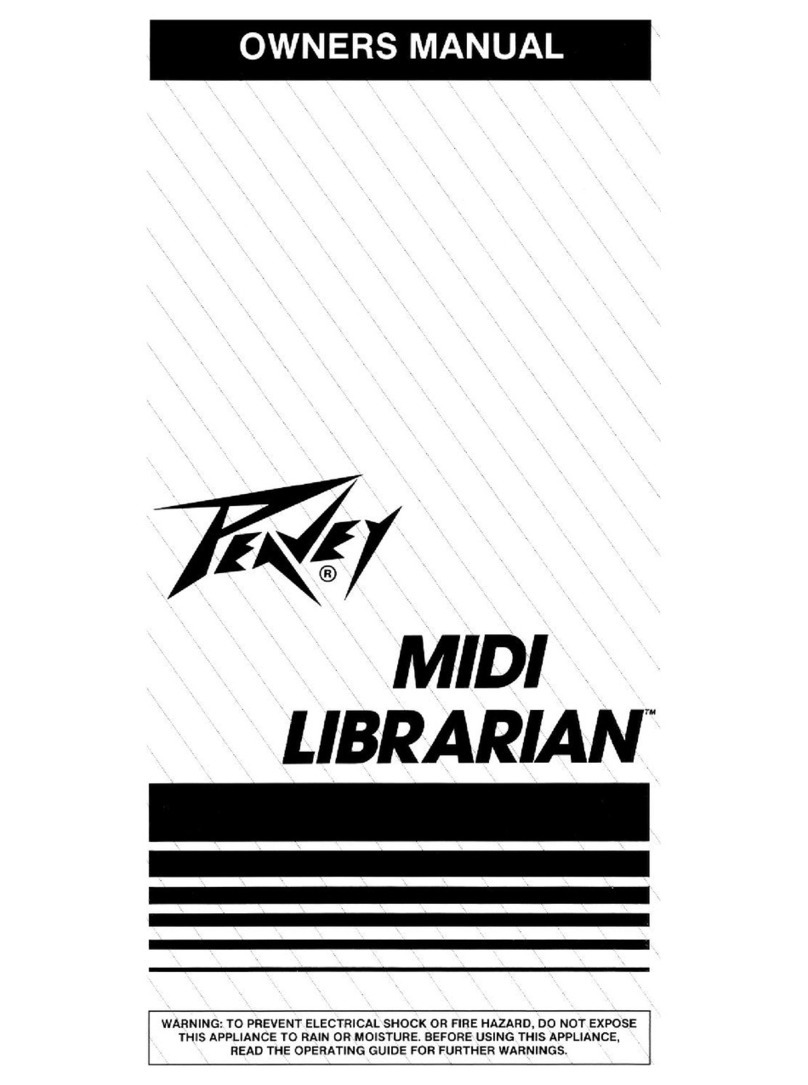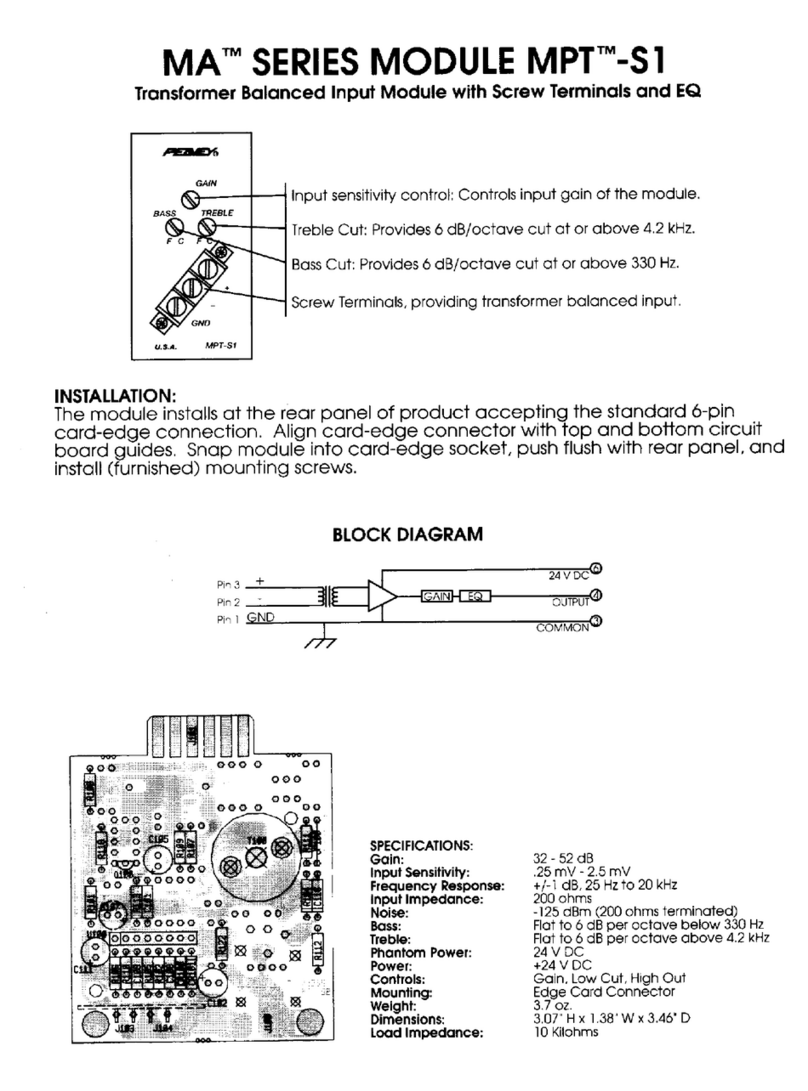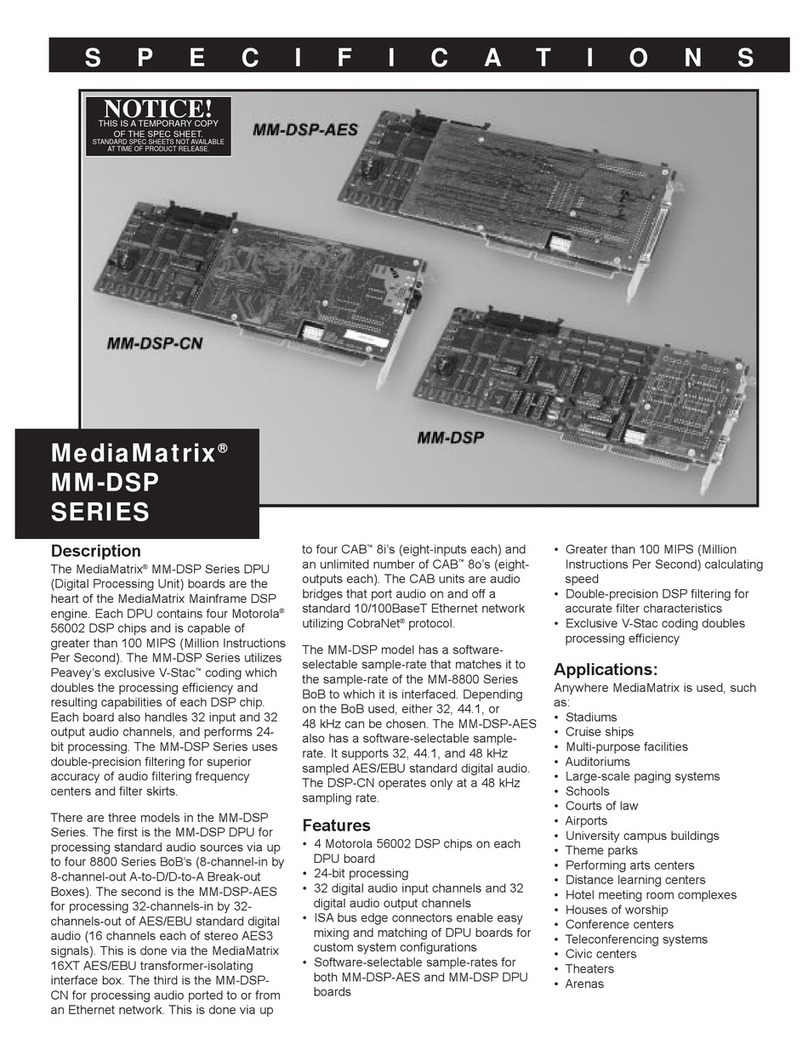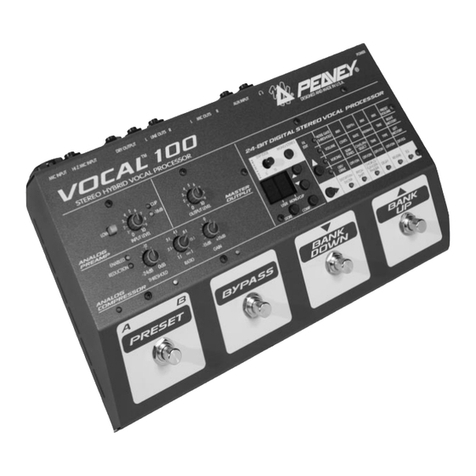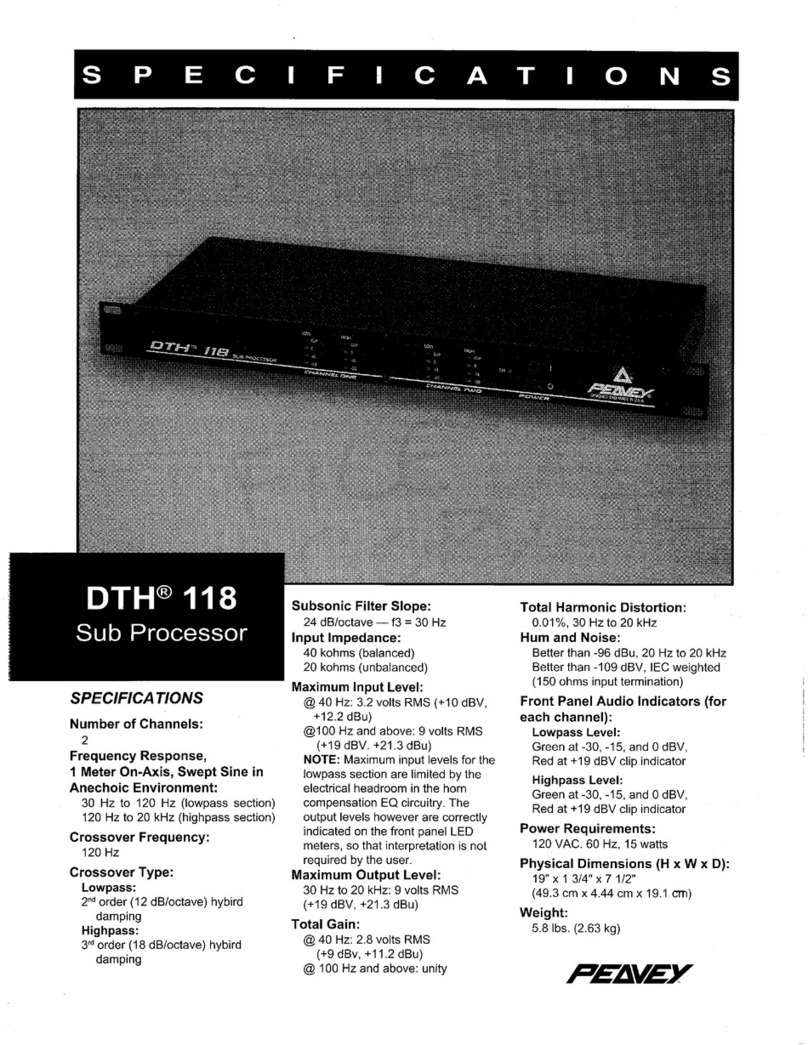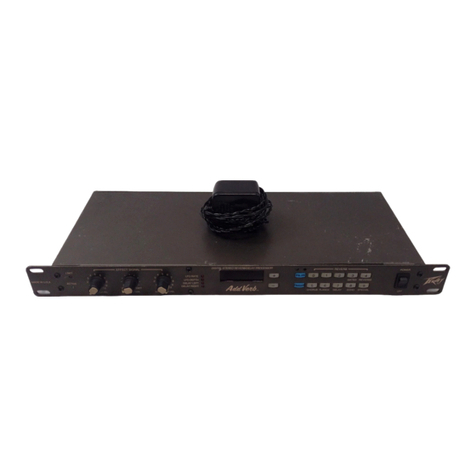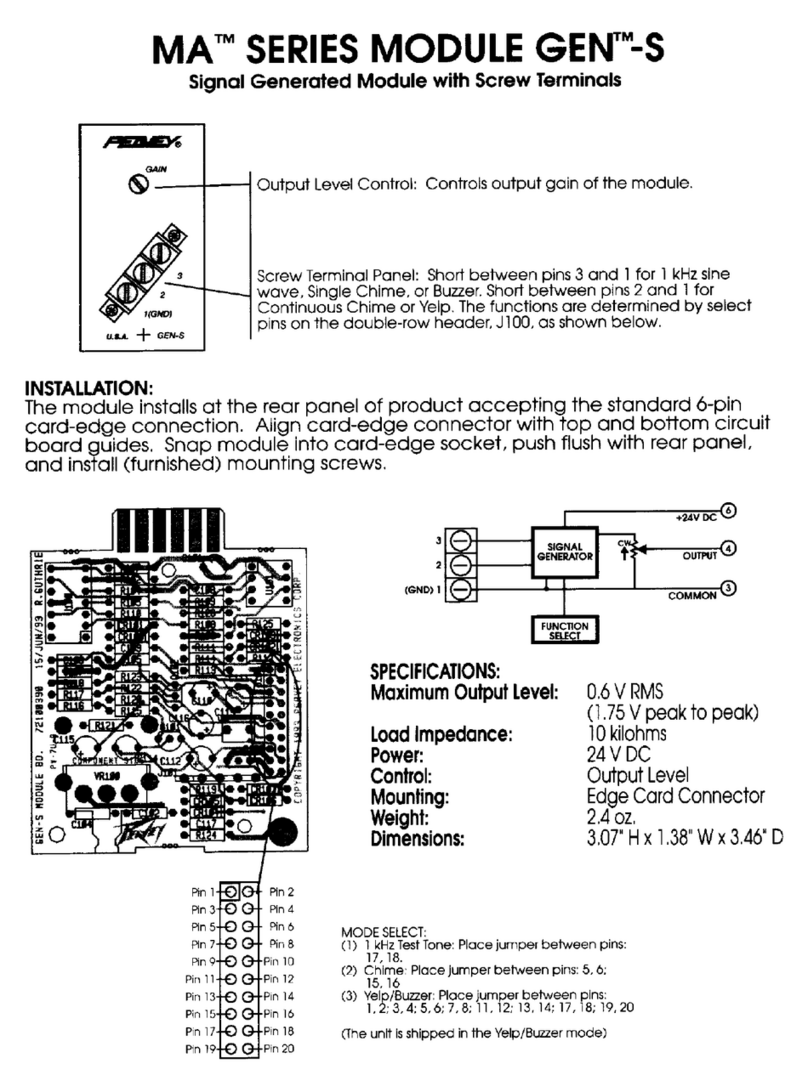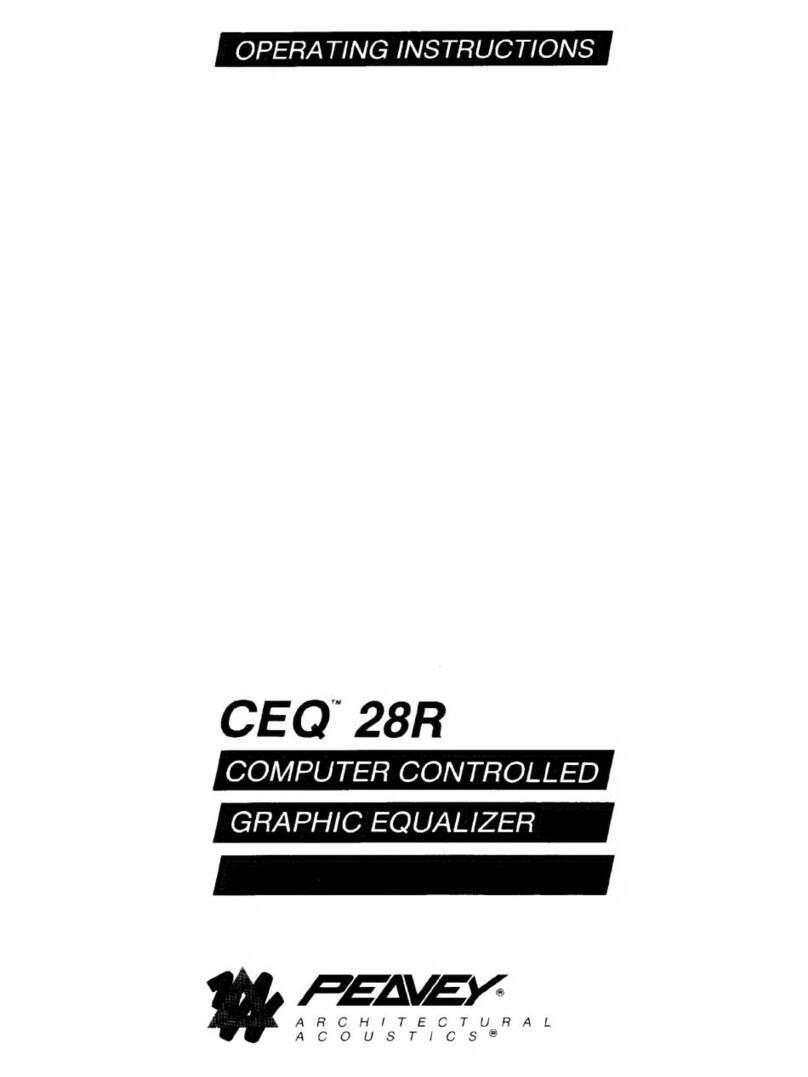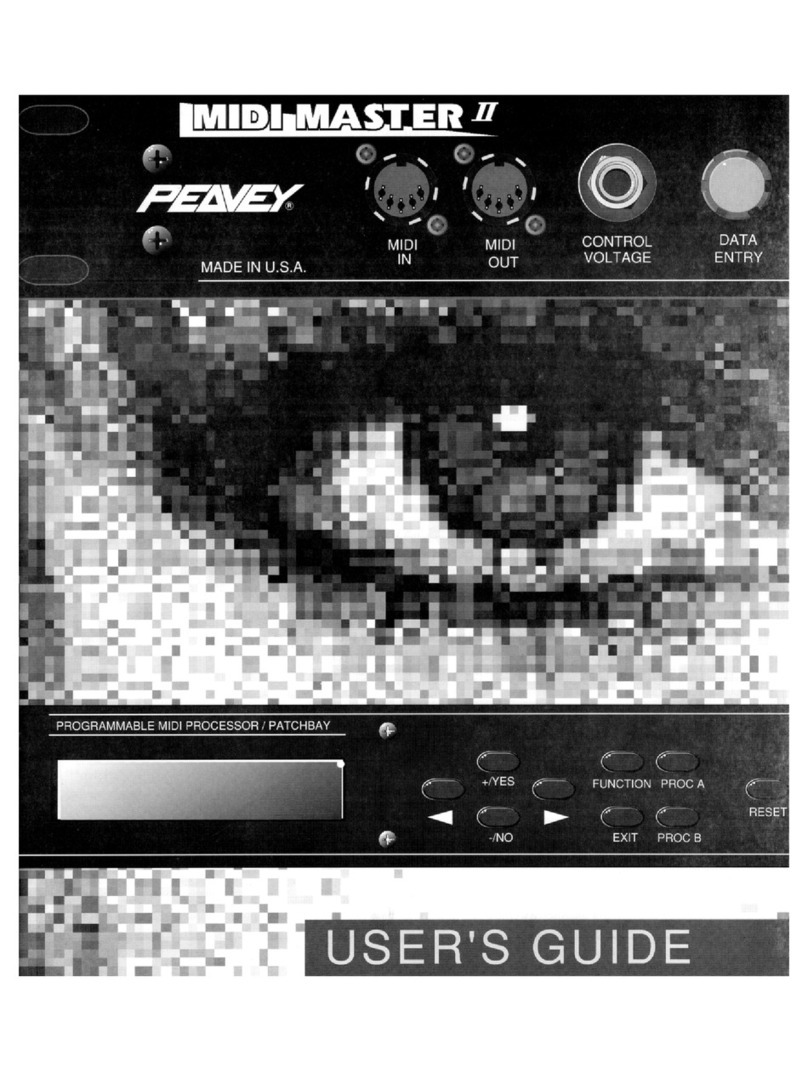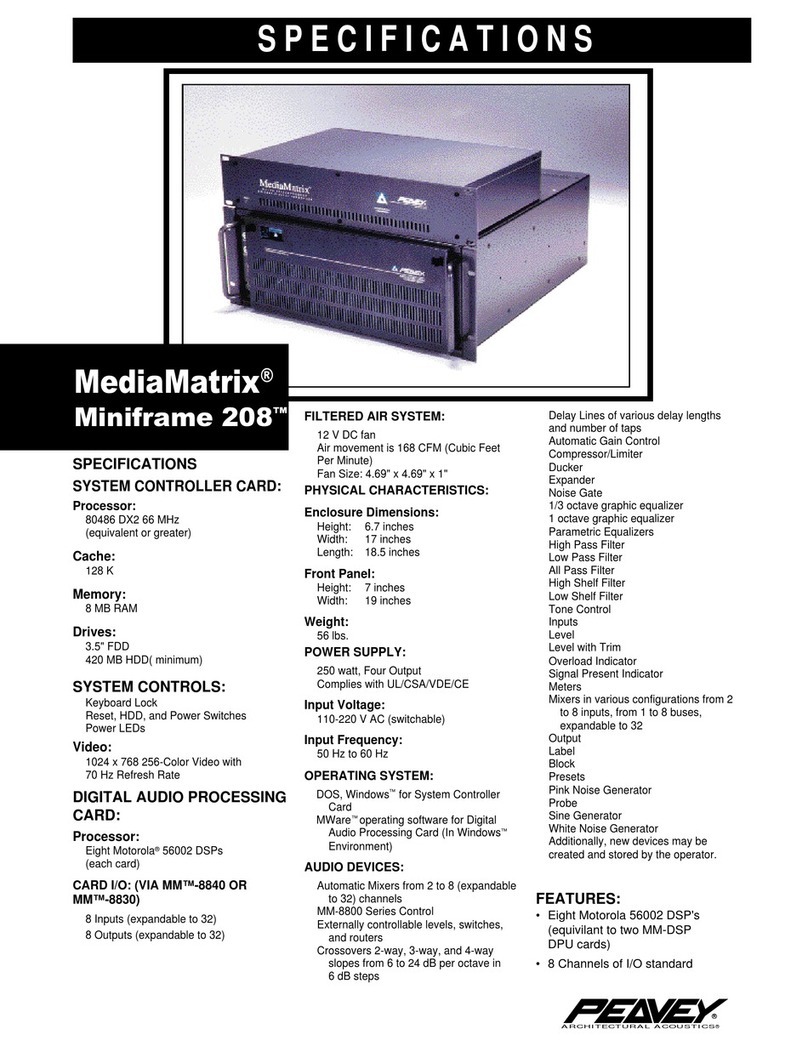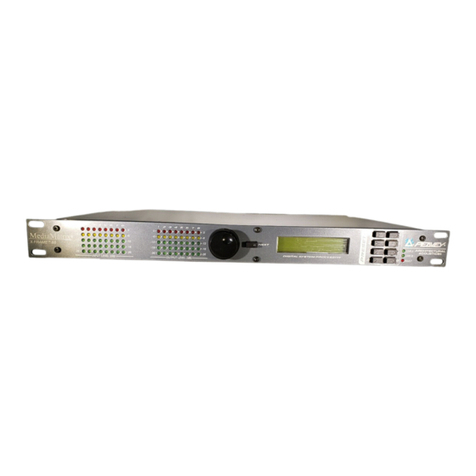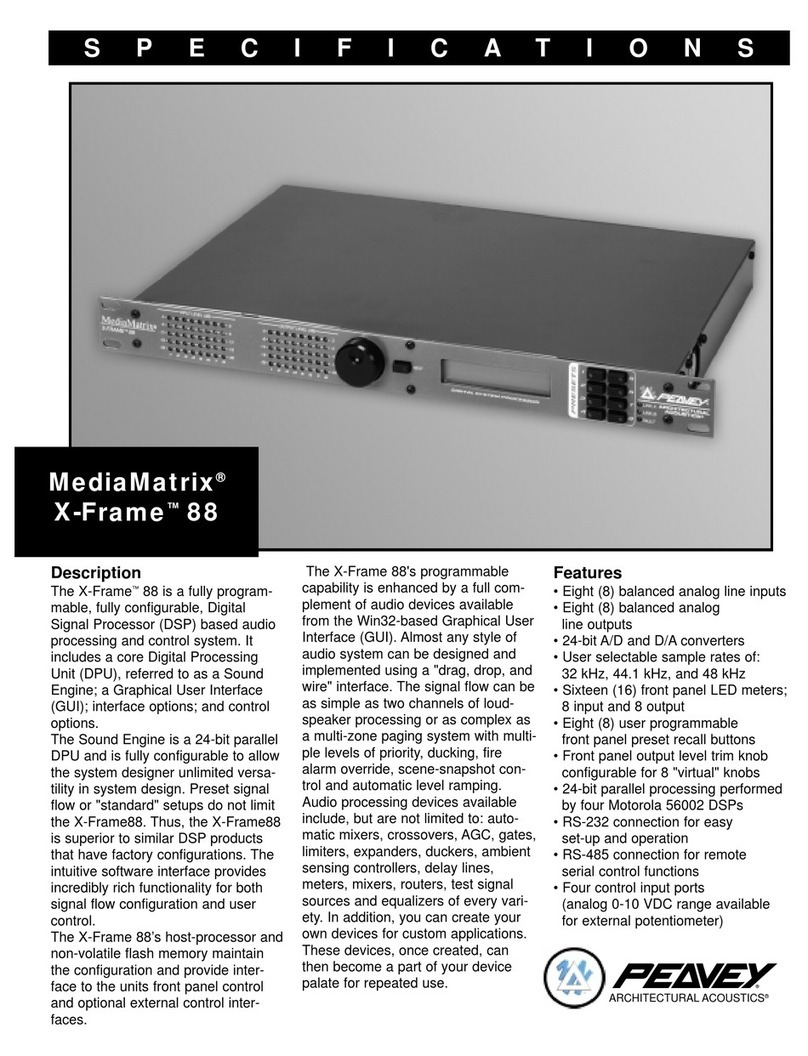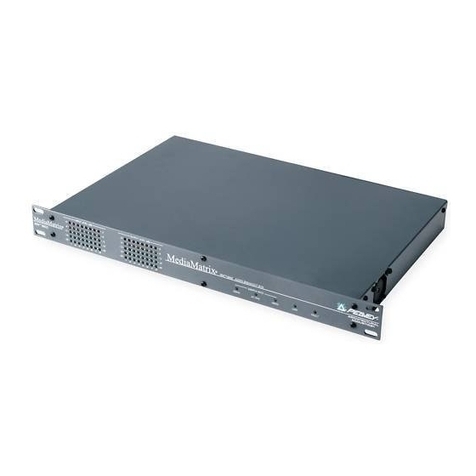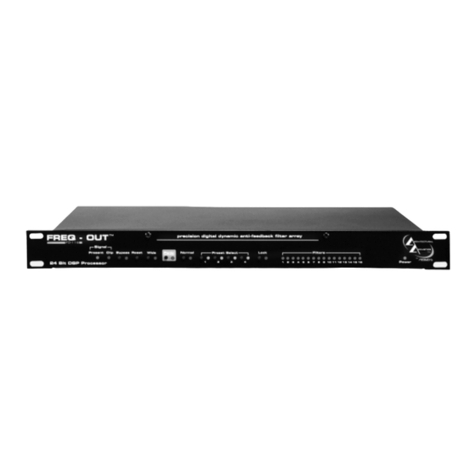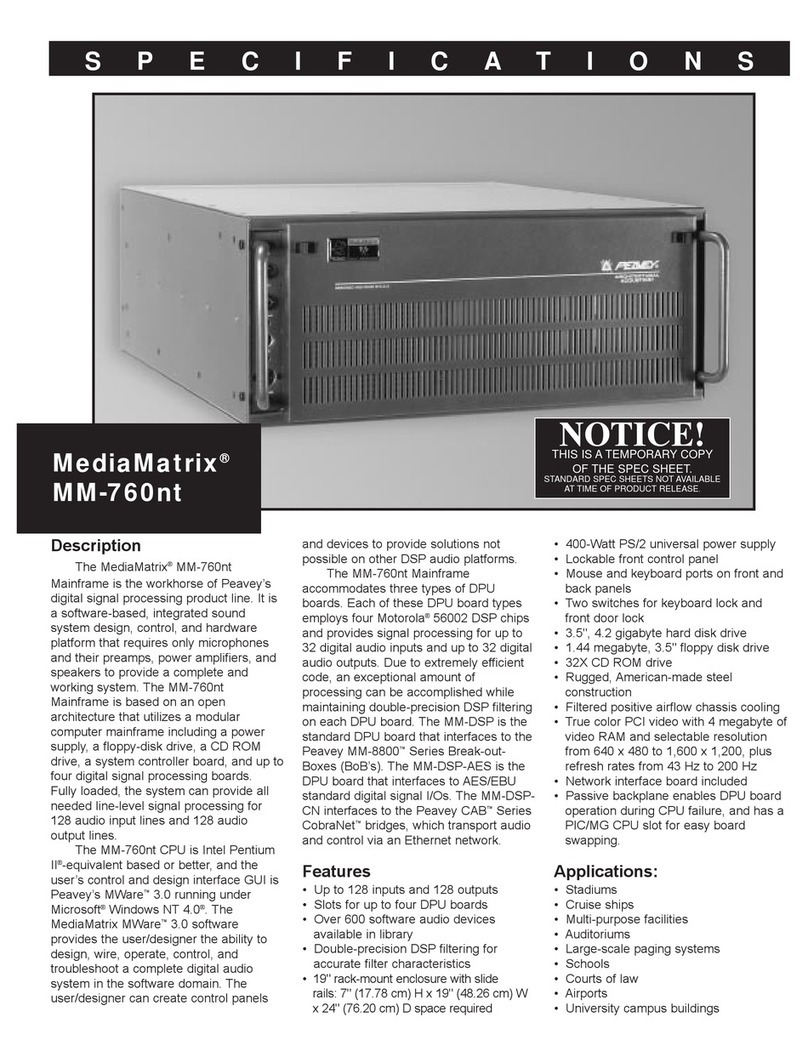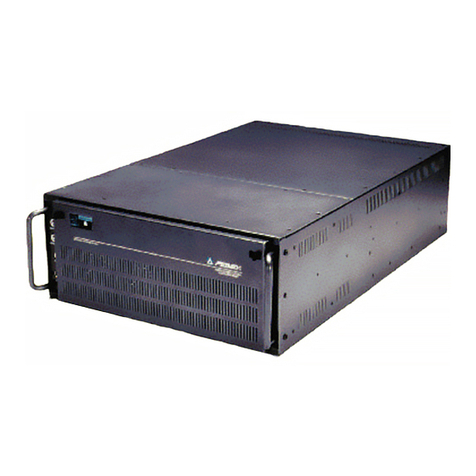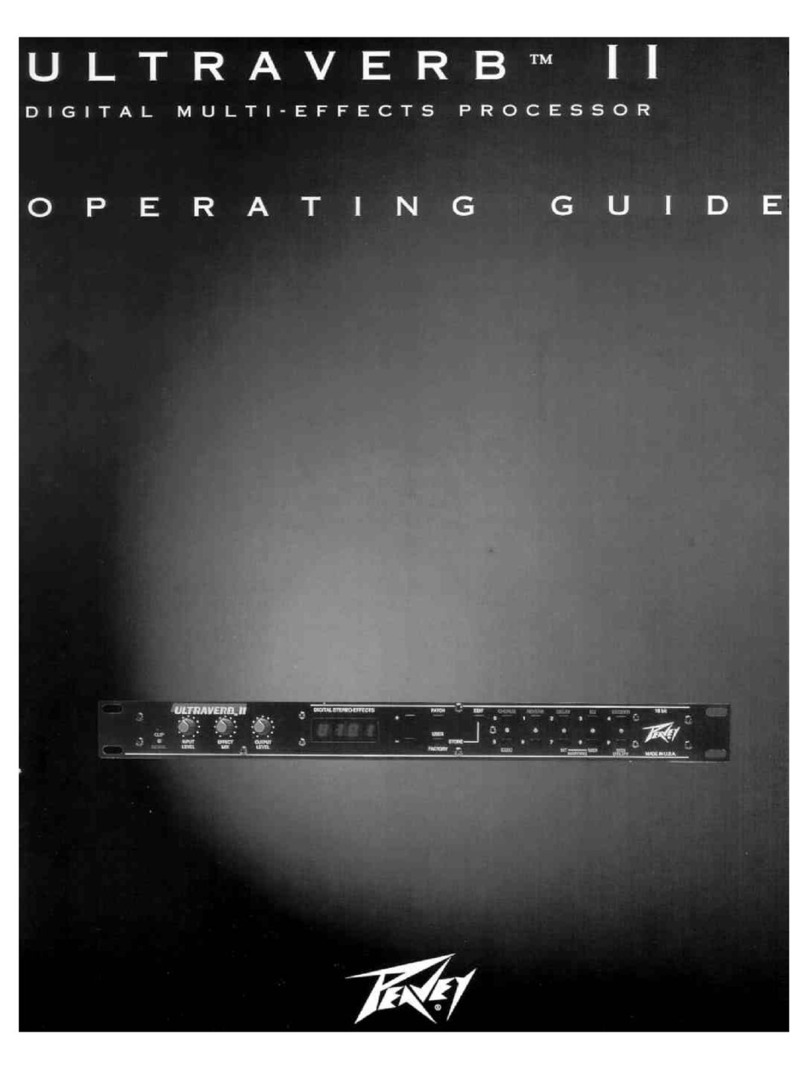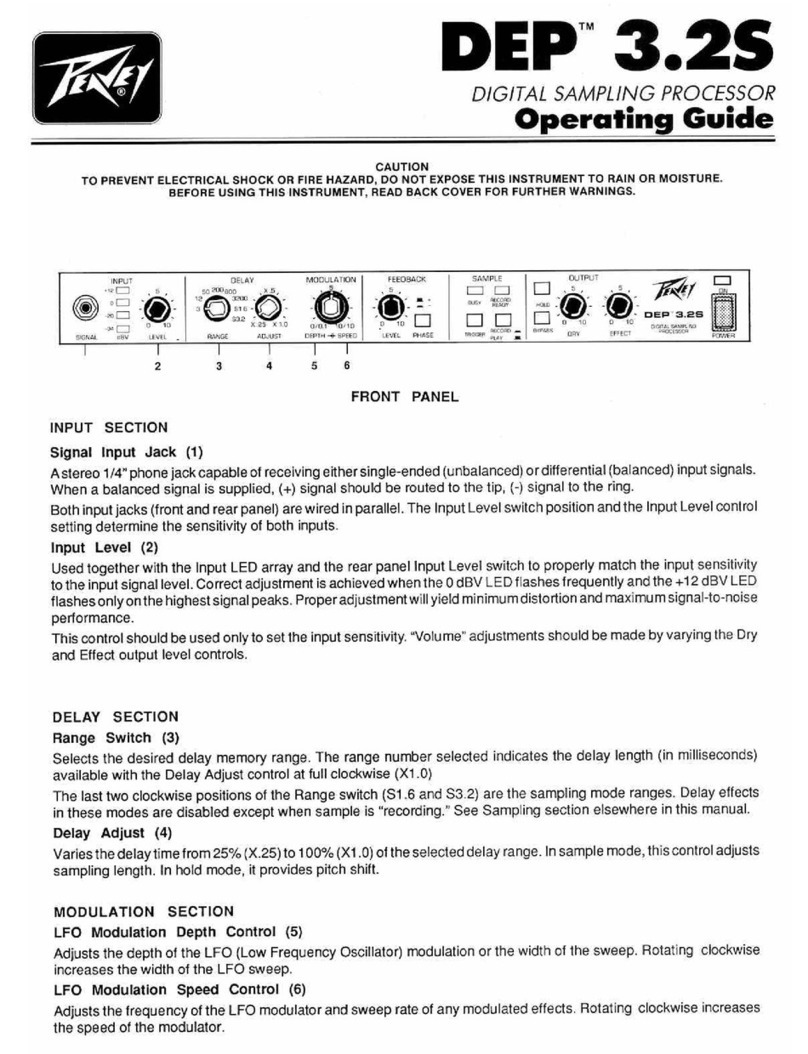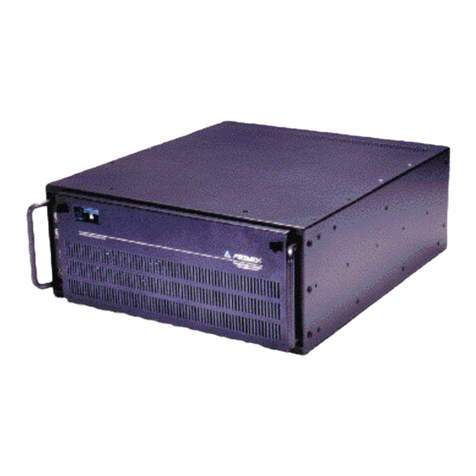4
control ports for virtually any
system control parameter
• Blocks: a graphic object
that contains a child window
with a sub-system or sub-
function, etc.
• Bump panels: a graphic
object for a control area,
label, message, etc.
• Comments: a text entry area to type
in any type of note or comment for
explanation or clarification
• Control modifiers to limit the range of
controls
• Crossover Networks: 2-, 3-, and 4-
way using Bessel, Butterworth, and
Linkwitz-Riley filter functions in
appropriate slope-rates from 6 dB to
48 dB per octave in 6 dB increments
• Delay lines: 5, 50, and 200 ms, plus
3D position calculating delays, from 1
to 16 outputs
• Diagnostics for the system (compiled-in)
• Diagnostics for the system (non-
compiled)
• Dip panels a graphic object for a
control area, label, message, etc.
• Dynamics AGC’s, compressors,
duckers, expanders, GAP Ambient
Level Sensors™, noise gates, and
limiters
• Equalization filters all-pass filters,
band-pass filters, CD horn lift,
graphic EQ’s, high-pass filters, low-
pass filters, parametric filter sets,
shelving filters, and tone controls
• Error indicators for digital errors
• Hardware failure indicators
• Labels: graphic areas to type in any
type of label, banner, etc.
• Level controls attenuators with and
without trim control (limits); cross-
faders; distribution amplifiers with 2
to 16 outputs; multi-channel
attenuator groups from 2 to 16
channels; On-Off switches; panning
attenuators from 2 to 5 channels;
ramps with adjustable ramp level
change, ramp time, and ramp rate
• Logic controls
Boolean with 2, 4, or 8 inputs
RPN base integer RPN, base logic
RPN, base % RPN,control inverter,
dual flip-flop, event counter, or flip-
flop functions
• Meters LED with tiny and large
signal-presence or overload indication,
Peak and RMS meters in 4
appearances with parameter controls
• Mixers from 2 to 64 inputs and from 1
to 16 outputs
• Presets: up to 25 system-wide with
more possible
• Program launchers to launch other
programs from within MWare 3.0
• RoomLink room combiners, using
either automixers, mixers, or mixers
with delay, for 3 to 15 rooms
• Routers: from 1 to 32 inputs and from
1 to 32 outputs, with or without
• Processor preconfigurations for 4
Peavey speaker systems
• Sub-presets: up to 25 for individual
child windows with more possible and
schedulable with a built-in event timer
• System mute to mute all outputs
simultaneously
• Test functions DC-voltage
generator, frequency-response
probe, I/O probe, pink-noise
generator, signal probe, sine-wave
generator, and a white-noise
generator
• Title blocks: a graphic area to type in
any type of title, etc.
• Via function to allow a signal to loop
back up the signal chain without
creating feedback oscillation
• Wave file players for 32, 44.1, and
48 kHz system sample rates at 100%,
50%, and 25% of that sample rate
Notes (1) New devices may be created
and stored by the user in these
libraries.
(2) Any control parameters of any
of the above devices may be
controlled via the control ports on
the BoB or CAB /Os, and via
third-party control software with a
properly configured interface port.
Other software packages not offering the
stability, security or flexibility of these
operating system and design/control/
diagnostics packages shall not be
acceptable.
The 900 Series Mainframe system shall
have the following front-panel controls and
connectors: Front door and keyboard
locks, system power and reset switches;
aux., power, and power fail LEDs; an AT
keyboard and PS2 mouse connectors. On
the rear panel, it shall have a Euro-style
AC cord connector, a DB-25 parallel
connector, a PS2 keyboard connector, a
PS2 mouse connector, a DB-15 video
connector and two COM port DB-9
connectors for COM 1 and COM 2.
(MM-980nt): The 900 Series Mainframe
shall have two, 400 Watt, redundant,
removable, load-sharing, front accessible
universal power supplies, UL, CSA, and
CE listed. (MM-960nt): t shall have a
400-Watt, removable, front accessible
universal power supply, UL, CSA, and CE
listed. t shall operate on AC power at
either 50 or 60 Hz +/-5%, from 100 to 120
VAC or 200 to 240 VAC +/-10% and with
auto-switch depending on the source
voltage. (MM-980nt): Each power supply
shall consume no more than 920 Watts
and produce no more than 3128 BTU/Hr.
at 115 VAC fully loaded, or consume no
more than 1150 Watts and produce no
more than 3910 BTU/Hr. at 230 VAC fully
loaded. Each power supply shall draw a
maximum in-rush current of no more than
80A at 115 VAC and no more than 40 A at
230 VAC. (MM-960nt): ts power supply
shall consume no more than 920 Watts
and produce no more than 3128 BTU/Hr.
at 115 VAC fully loaded, or consume no
more than 1150 Watts and produce no
more than 3910 BTU/Hr. at 230 VAC fully
loaded. The power supply shall draw a
maximum in-rush current of no more than
80A at 115 VAC and no more than 40 A at
230 VAC.
The 900 Series Mainframe shall be 6.97"
(17.70 cm) high by 19" (46.26 cm) wide by
26" (66.04 cm) deep and requires a
NEMA standard 30"-deep rack. t shall
weigh (MM-980nt): 63 lbs. (28.64 kg)/
(MM-960nt): 60 lbs. (27.27 kg). t shall be
finished in grey powder-coat painted steel.
t shall be supplied with the following
accessories: a detachable AC cord, rack
slides, keys for the front door and
keyboard lock, (MM-980nt): keys for
mirrored, redundant hard disk drives locks,
Microsoft Windows NT 4.0 CD,
MediaMatrix MWare 3.0 CD, Pentium
SBC manual, and drivers for the
10/100BaseT fast Ethernet board and PC
video board.
The 900 Series Mainframe shall be in
compliance with the standards of and
listed by UL, CUL, CE, and FCC part 15,
A. The mainframe system shall be the
Peavey MediaMatrix MM-980nt/MM-960nt.
Note Microsoft®Windows NT 4.0®is
a registered trademark of Microsoft
Corporation, and Motorola®is a registered
trademark of Motorola, nc. Pentium ®
registered trademark of ntel. CobraNet™is
a trademark of Peak Audio, nc.
